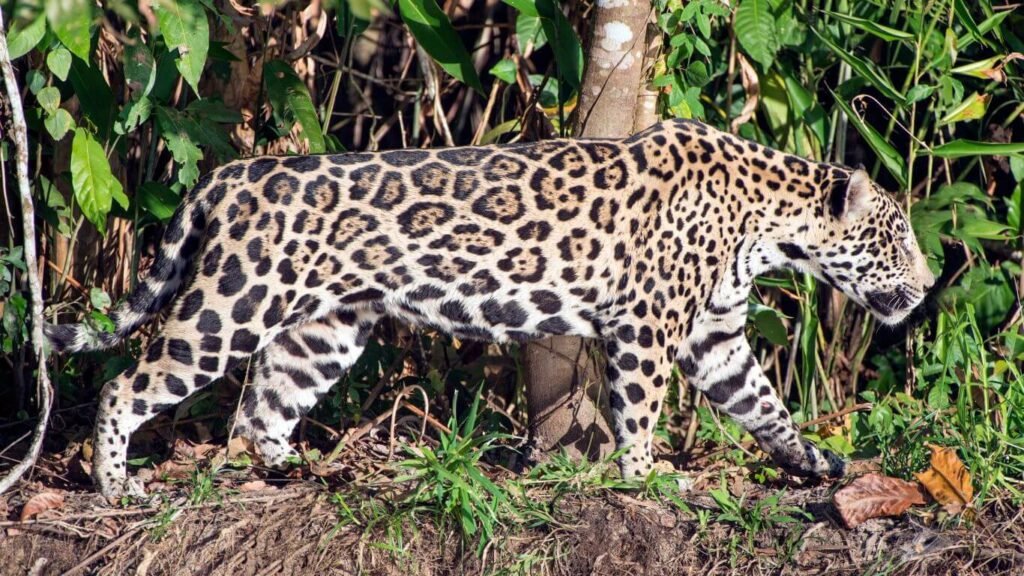The Pantanal is the perfect place to observe jaguar in their natural habitats, but knowing the areas they prefer and where they are usually found can be essential for a successful sighting. We’ll explore the territories that jaguars favor in the Pantanal and provide tips on how to access these places safely and responsibly.
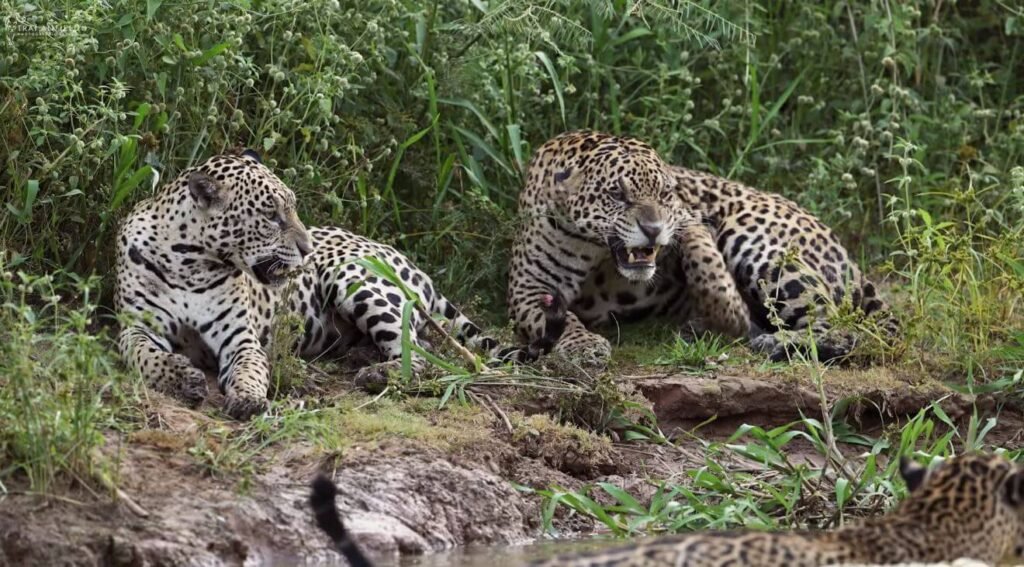
1. Riverbanks and Lakeshores: Essential Jaguar Habitats
Jaguars tend to approach riverbanks and lakeshores, where they find prey like capybaras and caimans. They also use these areas to cool off, as they are strong swimmers.
- Tip: The banks of the Cuiabá and Paraguay rivers are key spots during the dry season. Bring binoculars and respect the animal’s space to avoid disturbing its activities.
2. Dense Vegetation Areas: Jaguars’ Preferred Spaces
Dense vegetation provides jaguars with the camouflage they need to stalk their prey without being detected. Their ability to move silently makes these environments ideal for hunting.
- Tip: Stay alert to movements in the shadows and choose spots with good visibility, preferably with a guide who knows the terrain well.
3. Swamps and Wetlands: Rich Habitats for Jaguars
These aquatic environments are rich in wildlife, giving jaguars access to a wide variety of prey. Additionally, their ability to move between water and land gives them an advantage over other predators.
- Tip: Wear appropriate footwear and follow your guide in these areas to reach the best observation points, always respecting the environment and avoiding disturbing the wildlife.
4. Areas with High Prey Concentration: Where Jaguars Find Food
Jaguars tend to frequent areas where their prey is abundant, such as deer, capybaras, and other large mammals. These locations are often fields or areas close to water sources.
- Tip: Watch the behavior of other animals in the area; they tend to show nervousness when a jaguar is nearby.
5. Flooded Forests and Elevated Trails: Refuges for Jaguars
During the rainy season, jaguars seek higher ground to avoid flooding, moving through natural trails and spots with good visibility to track their prey.
- Tip: Access these areas with a guide who knows the paths and can ensure a safe and enriching experience.
6. Natural Trails and Forest Clearings: Jaguar Routes
Jaguars often move along natural trails in search of prey or to mark their territory, especially in open areas where they can stalk unnoticed.
- Tip: The best times to see jaguars in these areas are at dawn or dusk, when they are most active.
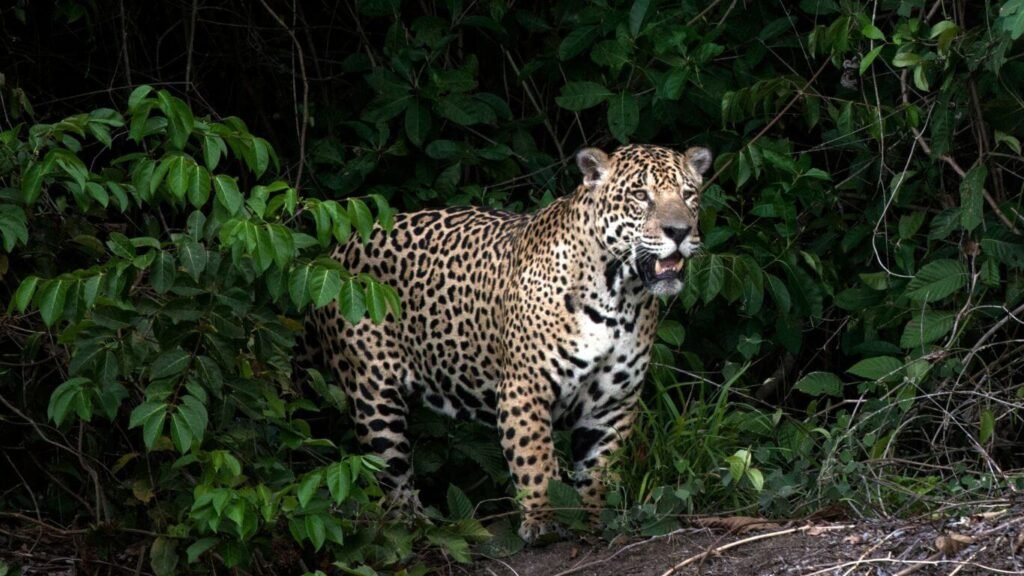
Knowing the places jaguars prefer and exploring these areas safely will increase your chances of having an unforgettable experience in the Pantanal. Having a guide and respecting the environment not only protects the jaguars but also enhances your viewing experience. At Lorenzo Expeditions, we have expert guides to help you discover these magnificent territories and observe jaguars in their natural habitat responsibly and enrichingly.
Prepare for a unique adventure and make sure to take unforgettable memories of your experience in the Pantanal!
Frequently Asked Questions about Jaguar Habitats in the Pantanal
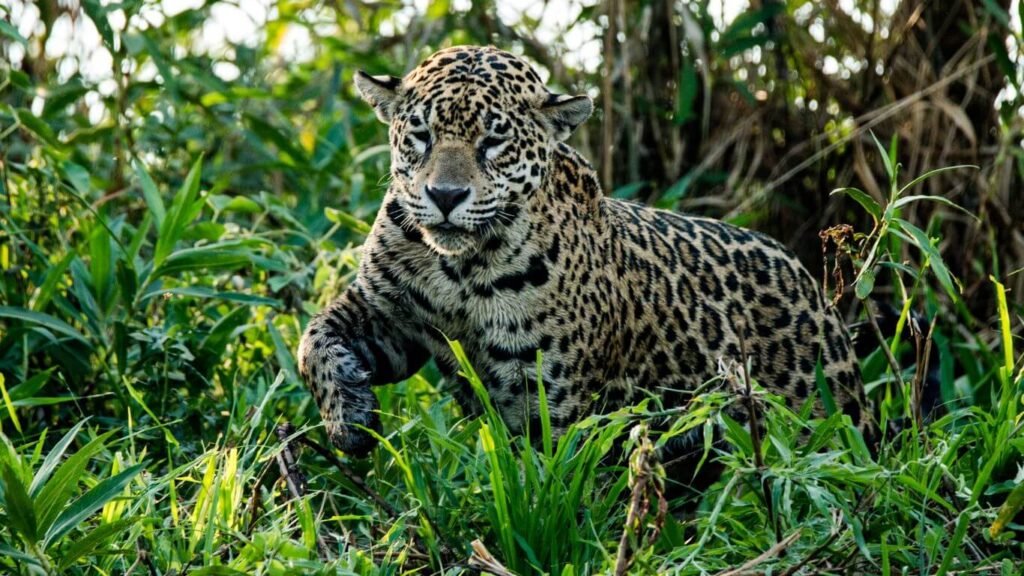
1. What are the best areas to observe jaguars in the Pantanal?
Riverbanks, dense vegetation areas, and wetlands are the most frequented places by jaguars.
2. What time of year is best for seeing jaguars in the Pantanal?
The dry season, between July and October, is ideal, as jaguars tend to come closer to bodies of water in search of prey.
3. Is it possible to see jaguars during the rainy season?
Yes, but a specialized guide is required, as jaguars move to higher areas, and the conditions can be challenging.
4. Why do jaguars prefer riverbanks?
Riverbanks provide access to prey such as capybaras and caimans, in addition to being cool spots where jaguars can swim.
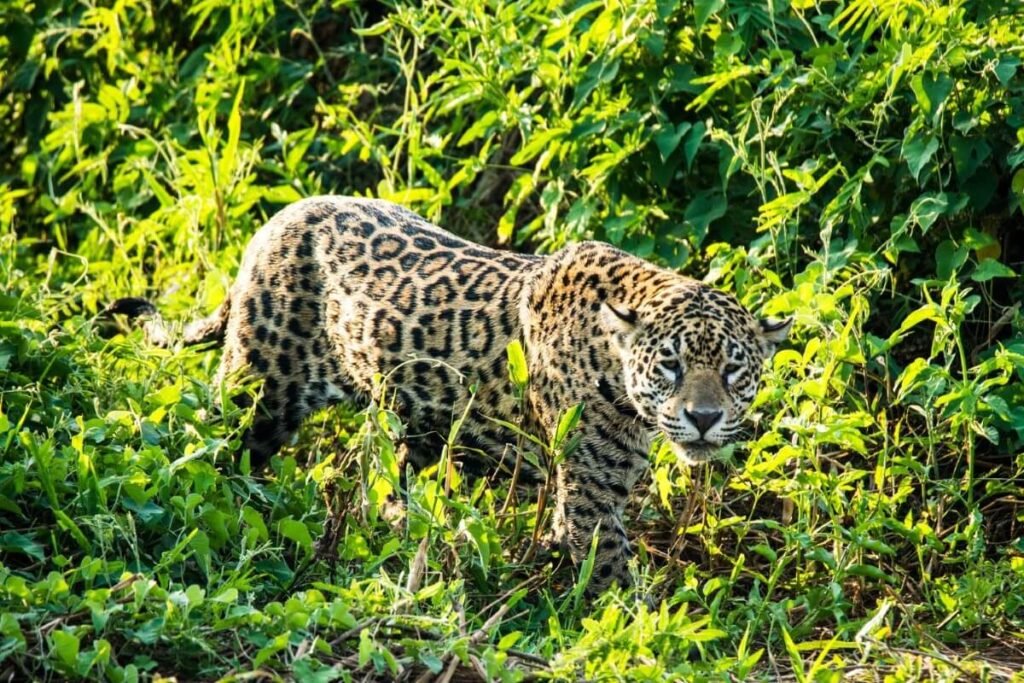
Book your adventure with Lorenzo Expeditions today! Our expert guides will take you to the best observation points, ensuring that you can enjoy the majesty of the jaguars in their natural environment in a responsible and safe way.

